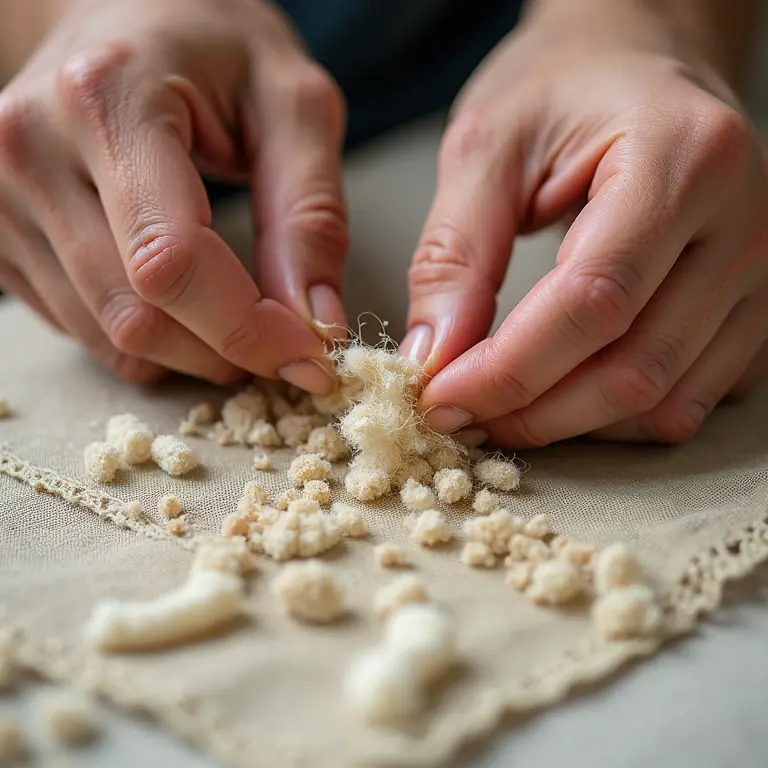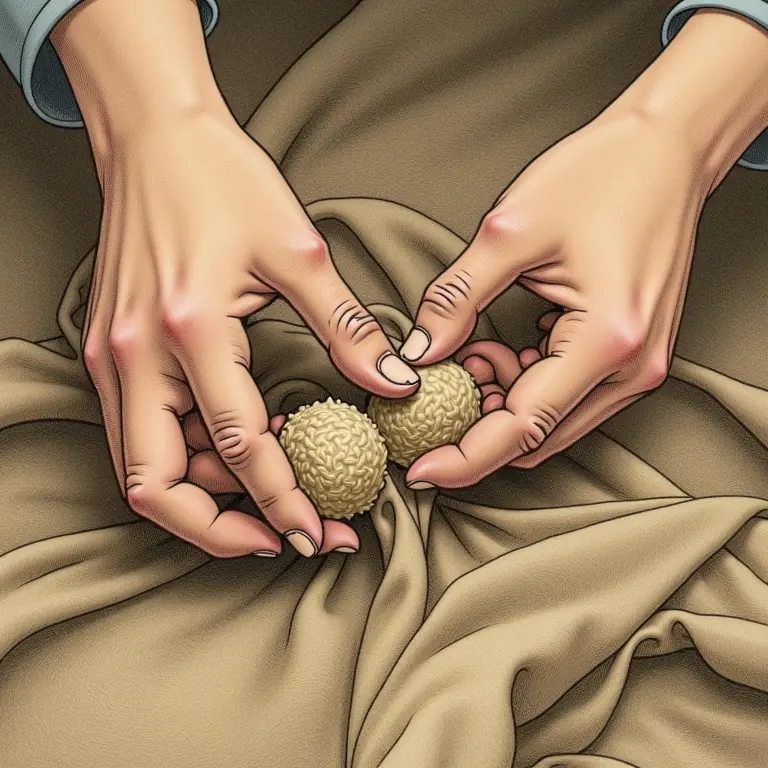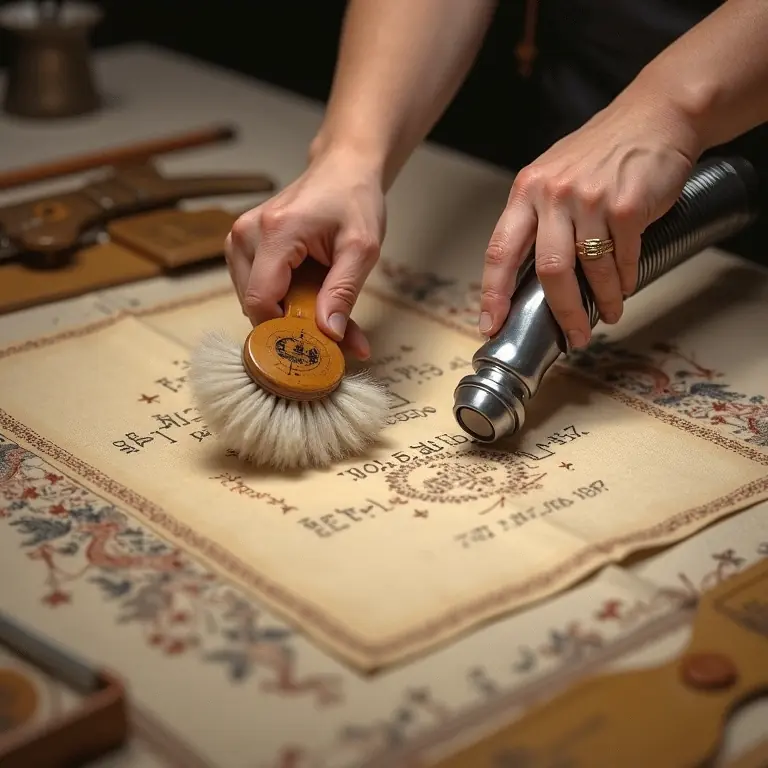Decode Your Dust Bunnies: A Friendly Guide to Basic Textile Conservation
Let’s face it: many of us have treasures tucked away – a grandmother’s quilt, a vintage dress, a beloved childhood blanket. These aren’t just objects; they’re woven with memories, history, and often, a good deal of delicate fabric. But time, and frankly, dust, aren’t kind. This guide will equip you with the basics of textile conservation, helping you understand how to care for these precious items so they can be enjoyed for generations to come. We’ll cover everything from understanding fabrics to simple cleaning techniques, storage solutions, and when to call in a professional.
Why Conserve Textiles?
Before we dive into the ‘how,’ let’s talk about the ‘why.’ Textiles are inherently fragile. They are susceptible to damage from light, insects, dust, humidity, handling, and even well-intentioned but incorrect cleaning methods. Conservation isn’t about making something *look* new; it’s about stabilizing the object, slowing down the deterioration process, and preserving its historical and artistic integrity. It’s about respecting the object’s story. Think of it as preventative medicine for your heirlooms.
Understanding Your Textiles
The first step in any conservation effort is understanding what you’re dealing with. Different fabrics react differently to cleaning and storage. Here’s a breakdown of some common materials:
- Cotton: Relatively strong, but susceptible to mildew and discoloration. Often used in quilts, clothing, and household linens.
- Linen: Made from flax fibers. Very strong and durable, but wrinkles easily. Common in older clothing, tablecloths, and bedding.
- Silk: Luxurious and delicate. Can be damaged by light, water, and insects. Requires gentle handling.
- Wool: Warm and durable, but prone to moth damage. Requires careful storage.
- Synthetic Fabrics (Polyester, Nylon, Acrylic): Generally more durable and resistant to damage than natural fibers, but can melt with heat or react to certain cleaning agents.
- Velvet: A woven fabric with a short, dense pile. Can be delicate and requires special care to maintain its pile.
Identifying the Fiber: If you’re unsure what a fabric is, a simple burn test (performed with extreme caution and proper ventilation – do this at your own risk and with all safety precautions) can offer clues. Natural fibers will smell like burning hair and leave ash, while synthetics will melt and smell like plastic. However, blends can be tricky, and a professional analysis is always the most accurate.
The Enemies of Textiles
Knowing what harms textiles is crucial for protecting them. Here’s a rundown of the major culprits:

- Light: UV radiation causes fading and weakens fibers. This is a major concern, especially for colored textiles.
- Dust: Abrasive and attracts pests. It also provides food for dust mites.
- Insects: Moths, carpet beetles, and silverfish are textile pests. They feed on fibers, leaving irreparable damage.
- Humidity: High humidity promotes mold and mildew growth, while fluctuating humidity causes fibers to expand and contract, leading to weakening.
- Temperature: Extreme temperatures can damage fibers.
- Handling: Frequent and rough handling can cause wear and tear.
- Acidity: Acidic environments, often caused by wood pulp in storage materials, can degrade fibers.
Basic Cleaning Techniques
Cleaning textiles is a delicate process. Always test any cleaning method on an inconspicuous area *first*. Here are some basic guidelines:
- Vacuuming: Use a vacuum with a HEPA filter and a brush attachment. Cover the nozzle with a piece of netting (like pantyhose) to prevent small parts from being sucked up. Vacuum gently in the direction of the weave.
- Surface Cleaning (Dry Cleaning): For delicate items, a dry cleaning sponge can be used to gently lift surface dirt. Follow the manufacturer’s instructions.
- Spot Cleaning: For small stains, use a soft cloth dampened with distilled water. Work from the outside of the stain inward. Avoid rubbing, which can spread the stain and damage the fibers.
- Washing (Proceed with Extreme Caution!): Hand washing is generally safer than machine washing. Use cool water and a pH-neutral detergent specifically designed for delicate fabrics. Avoid harsh chemicals like bleach. Rinse thoroughly and dry flat, away from direct sunlight. Never wash antique or very fragile items without consulting a professional.
Important Note: Avoid using starch or fabric softeners, as they can attract dirt and pests. Also, be very careful with water-soluble dyes – they can bleed and ruin the entire piece.
Storage Solutions
Proper storage is paramount to textile conservation. Here’s what you need to know:
- Acid-Free Materials: Use acid-free tissue paper, boxes, and hanging materials. Avoid wood pulp-based materials, as they contain acids that can degrade fibers.
- Darkness: Store textiles in a dark environment to protect them from light damage.
- Ventilation: Ensure good air circulation to prevent mold and mildew growth.
- Padding: Pad folds with acid-free tissue paper to prevent creases and strain on the fabric.
- Rolling vs. Folding: For some items, rolling is preferable to folding, as it creates fewer creases.
- Hanging: If hanging, use padded hangers and support the weight of the textile evenly. Avoid hanging delicate items for extended periods.
- Containers: Use breathable containers like cotton muslin bags or acid-free boxes. Avoid plastic containers, which can trap moisture.
Specific Storage Considerations:

- Quilts: Store flat, rolled around a sturdy tube, or folded with plenty of padding.
- Clothing: Store in acid-free garment bags or boxes.
- Embroidery and Needlework: Store flat, supported by acid-free board.
Pest Control
Preventing pest infestations is crucial. Here’s how:
- Regular Inspection: Inspect textiles regularly for signs of pest damage (holes, webbing, frass – insect droppings).
- Cleanliness: Keep storage areas clean and free of debris.
- Cedar: Cedar chests and hangers can help repel moths, but their effectiveness diminishes over time.
- Lavender: Lavender sachets are a natural insect repellent.
- Freezing: Small items can be sealed in plastic bags and frozen for several days to kill pests. (Be sure the item is completely dry before freezing.)
- Avoid Pesticides: Avoid using harsh chemical pesticides, as they can damage textiles and pose health risks.
When to Call a Professional
Some textiles require the expertise of a professional conservator. Consider seeking professional help if:
- The textile is extremely fragile or damaged.
- The textile is historically significant or valuable.
- You are unsure about the best cleaning or storage methods.
- The textile has complex construction or embellishments.
- You are dealing with a serious pest infestation.
A professional conservator can assess the condition of the textile, develop a treatment plan, and perform necessary repairs and stabilization. Look for a conservator accredited by a professional organization, such as the American Institute for Conservation (AIC). You can find a conservator near you through the AIC website.
Resources & Further Learning
Here are some helpful resources to expand your knowledge of textile conservation:
- American Institute for Conservation (AIC): https://www.culturalheritage.org/
- Textile Conservation at The Met:
Putting it All Together
Textile conservation is a commitment. It’s about taking the time to understand your treasures and providing them with the care they deserve. It’s not always glamorous, but the reward – preserving a piece of history and a piece of your heart – is well worth the effort. Remember to always prioritize gentle handling, proper storage, and preventative measures. And when in doubt, don’t hesitate to seek professional advice.
Want to learn more about other ways to preserve your treasures? Check out these other friendly guides:


Discussion about this post